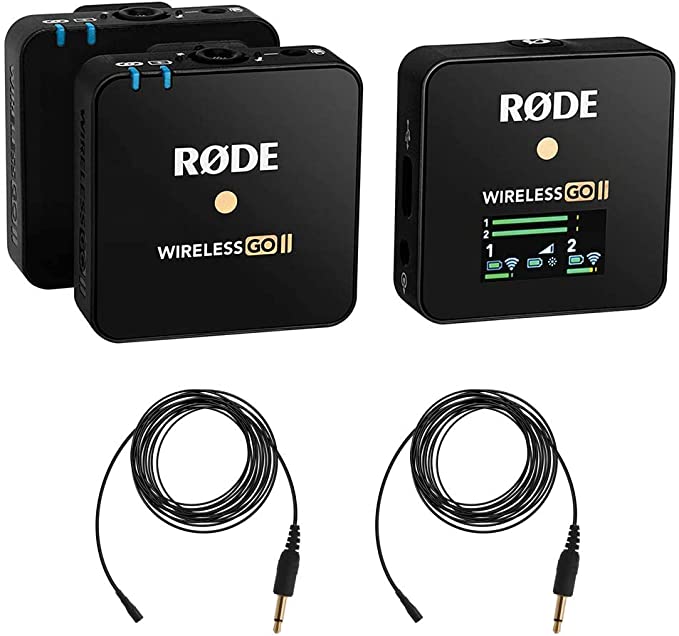Godox AD200 vs. Godox AD200 Pro: Which One Should You Buy?
The Godox AD200 and the Godox AD200 Pro are two powerful flash units for photographers.
They’re both very similar, but have some key differences that might make one more appealing to you than the other.
Which one is better fit for your photography needs?
Do you already have the Godox AD200 and are considering an upgrade?
What are the key differences between the two models?
Is the Godox AD200 Pro worth the extra cost?
Let’s take a closer look as this Godox AD200 and Godox AD 200 Pro pocket flash review that will compare these two flashes to help photographers decide which one should they buy.

Godox AD200 and Godox AD200 Pro
Both models have the small, portable, and compact design of a speedlight, but with the power output of a studio flash.
The AD200 and the AD200 Pro both offer 2900 mAH battery packs that can accommodate 500 full power flashes with 0.01 to 2.1 seconds recycling.
Each flash head is removable and interchangeable with a bare bulb and speedlite option included to vary your quality of light.
These models also have a built-in 2.5 Hz Wireless X system, or more commonly called a wireless receiver that is compatible with plenty of camera models. You can have the option to control triggering power level, and have an alert beep with an optional wireless transmitter.
The flashes also provide color temperature and consistency at a steady 5600K over the entire power range. It means that there would be minimal difference in color temperature between shots and that the color temperature is daylight balanced.
The Godox AD200 and Godox AD200 Pro has 3 flash modes: Manual, TTL, and Multi (Stroboscopic). Manual mode leaves the choice of power, modeling light, first or second curtain sync, etc. up to the userl. TTL uses the flash head’s built-in X1 receiver, while the Multi controls the stroboscopic rate up to 90 Hz.

The Godox AD200 Pro is the enhanced version of its predecessor
The Godox AD200 Pro is the second generation of its predecessor that includes a series of enhancements.
Recessed back panel
A broken screen or back panel is one of the most common reasons for repairs in the AD200. This was addressed with a better casing in the AD200 Pro, with a recessed back panel. Now, if the AD200 Pro falls over, it’s less likely to break.
Improved casing
The improved casing also comes with an upgraded metal flash holder/umbrella mount for more secure and stable attachments to light stands.
Navigational Buttons
It also has some additional navigation buttons allowing for quicker workflows, and a revised on/off switch.
Color Consistency Mode
The most notable enhancement is the Dedicated Stable Color Temperature Mode Mode (Color Consistency Mode), which improves color consistency to within +/- 100K throughout the entire power range.
Steps of Adjustments
When it comes to power range, the AD200 Pro is 1/1 to 1/256, allowing for 9 steps of adjustment, whereas the AD200 is 1/1 to 1/128, with only 8 steps of adjustment.
With the AD200 Pro, you can now change the power in 1/10 stop increments as compared to only ⅓ stop increments on the AD200. This would come very handy for product photographers or macro photographers who need really small amounts of power to get the levels just right.
Recycling Times
The AD 200 Pro is 15% better when it comes to recycling times, with a full-power recycle time of 1.8 seconds, allowing for faster shooting. This would prove useful when it comes to shooting big events.
USB C for firmware updates
Also included is a USB Type-C port for updating the flash’s firmware, which is quite an advantage considering most devices these days already use Type-C, so there’s uniformity with your cable cords.
Is the Godox AD200 right for you?
Let’s first start with figuring out if the Godox AD200 is right for you. This depends on how you are going to be using this flash.
Do you need it on top of your camera or do you need something like a speedlight? Are you going to be using this in the studio? Other models of flash would probably be a better choice.
A speedlight gives the option of versatility, however it is not powerful enough to overpower light coming from the sun when we photographers need to shoot in the middle of the day.
On the other hand, studio lights have more power, but they are bulky and they hold you back from moving freely and quickly when shooting in confined spaces.
So if you are looking for a hybrid that has the convenience of a speedlight and but with the power of a studio flash, the Godox AD200 would be a great choice!
Godox AD200 Design Review: What’s the hype all about?
Reasons why I love the Godox AD200 family
The Godox AD200 has a small, portable, and compact design that is slightly largely than a standard speedlight, but with 200 watt seconds, gives three times more powerful flashes that would be a perfect addition to your kit
The light it gives will of course not completely overpower the sun, but it will give you more leeway than a speedlight. This is important since most people buying the Godox AD200 are those people doing outdoor photography, such as for weddings and other events. So if that’s your purpose for looking at this comparison, then this just might be for you!
It also has a built in radio receiver and lithium-ion battery pack, giving the photographer convenience and ease-of use
I love being able to use it with the Magring and the magshoe. I often use two AD200s in the MagRing
Godox AD200 Interface Review: The convenience of a wireless function
This hybrid pocket flash has a 2.4GHz built-in radio, and while other radio trigger brands have the problem of misfires, most review of the Godox AD200 say that they rarely experience any misfires form the system! It means you can push the limits of this system distance-wise, and the performance will still be consistent.
Take note: The receiver is built right into the light, so you don’t need to purchase and set-up any extra pieces of equipment, which saves you a lot of time!
Godox AD200 Battery Life Review: How far can a single charge take you?
Since the Godox AD200 has a single rechargeable lithium-ion battery pack. It can handle multiple events even when you forget to charge in between! This is a big difference from when it all used to be AA batteries, which would run out of juice pretty quickly. It also charges in only a couple of hours when placed in its battery charger, unlike rechargeable AAs that takes most of the night to charge, only to quickly drain.
What’s nice about the Godox AD200 is that it also has a battery indicator in the back screen, so you can keep a look out for when it’s time to charge the battery. This warning is a big convenience since it saves you the hassle of being immersed in the shoot and suddenly your flash stops firing. What a bummer!
Godox AD200 Recycle Speed Review: How fast are the recycle times?
When shooting at 1/16th power or less, it is very fast! This comes pretty handy when shooting portraits a lot of motion, where you can set your camera to continuous-high mode.
It comes as a big advantage when shooting parties where there’s a lot of dancing involved. If you were using other speedlights, you would be getting lots of black frames when the light don’t recycling fast enough. This is not a problem on the Godox AD200 in which you can set the power lower and shoot in burst all throughout the party without worrying about recycle times.
Godox AD200 Shutter Speed Review: High Speed Sync
If you need to cut down the abundance of ambient light when shooting midday, then high speed sync flash is your best bet. You can do this by reducing your shutter speed.
Godox AD200 is capable of handling HSS, a lot of reviews say that it tends to overheat when you are shooting rapidly in HSS. The smaller your shutter speed is, the faster the pocket flash tends to overheat. This problem can be easily remedied, however, by backing off the shutter speed for a while and using a smaller aperture.
Godox AD200 Overall Review: Are there any drawbacks?
Heating issue
Aside from the overheating issue when using HSS, this off camera flash is actually practically perfect.
Not an on-camera flash
There are some things you need to be aware of though before deciding to purchase one. Since it’s an off camera flash and it doesn’t have a hotshoe, it cannot be attached to your camera.
No shoe mount
It also does not have a shoe mount, and also a bit heavier than a speedlight, it’s not compatible with some handy tools. It’s basically a strobe needing a light stand.
The Godox AD200 is also not ideal for capturing high-ISO images where there is next to no ambient lighting around. You might want to have that in mind when considering.
Basically, this flash is not perfect for every shooting situation, but it is the perfect fit for shooting fast-paced outdoor events in daylight.
Is it worth the extra cost?
The GodoxAD 200 at $269 and the GodoxAD 200 Pro at $298. This difference may be worth it if you need an extra stop of power from your flashes, if you are prone to knocking over your flash, or if you want that added advantage of Color Consistency Mode. If you have an extra $50, I’d say go for the Godox AD200 Pro since it has everything that the AD 200 offers and more.
Final verdict: Buy the Godox AD200 Pro
A lot of photographers have been asking about the differences between the Godox AD200 and the Godox AD200 Pro. It’s worth noting that even though both are great products, they each offer different benefits.
If you are looking to upgrade your current photography equipment, the Godox AD200 may be just what you need. It will allow you to get better results with less effort!
On the other hand, if you have the extra cash, the Godox AD200 Pro is a great option for those who need high powered lighting and more power per flash.
We hope this blog post has helped you better understand the differences between these two strobes and given you a starting point to make your informed purchase decision when purchasing new lights for your business or hobby.



